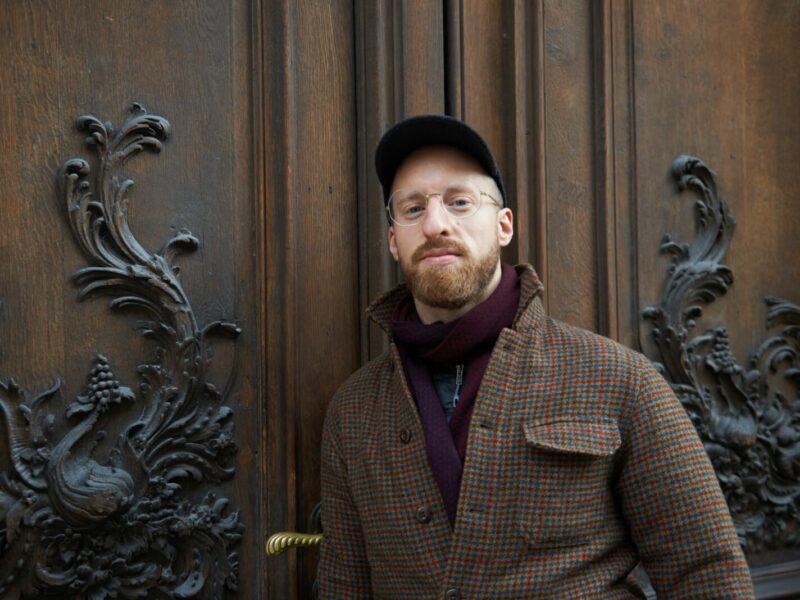Thuringia is not only a treasure trove, but also a cradle for kings and queens
I was really surprised at the number of castles when I came across the Thuringia Treasury website during my Google research. What was also new to me: Thuringia has the highest density of castles and palaces in the whole of Germany. How did this come about? The Wettin aristocratic family had split into small families over the centuries. This made independent territories and residences necessary. Bismarck mocked the most powerful of the Thuringian noble houses, “Saxe-Coburg and Gotha”, as the “stud farm of Europe”, because its clever (marriage) policy in the 19th century produced kings and queens of Portugal, Belgium, Bulgaria and Great Britain. Now I understood the historical context, I could set off on my excursion to discover Thuringia for myself.
On the road in Thuringia with the aim of seeing all the castles at once
I have the feeling of being at home and yet discovering something unknown. Destinations within Germany always feel very special to me. I pitch my “tent” in Weimar for very pragmatic reasons. It's quite conveniently located in terms of transport links and all the castles in Thuringia are easy to reach by car from there.
My first castle on the way from Bavaria is the Veste Heldburg with the German Castle Museum. I park my car down at the edge of the forest and then walk up an old hollow path to the castle complex. The air is wonderfully clear and it smells of the forest floor. The communications officer greets me and gives me a tour of the grounds. I am impressed by the location, the views of the vast landscape and the eventful history, most recently as an observation post during the inner-German border until 1990. My guide keeps telling me anecdotes from his own family that are connected to the place and the castle. The castle garden is planted with fruit and vegetables that were once used to supply the castle and are now used as a green exhibition for children. My tour guide is very proud of the bees that he looks after himself. Full of impressions, personal stories and donated tomatoes, I set off for my next castle in Thuringia.
Fairytale castle on the Saale
I've been looking forward to this for a long time: one of the three Dornburg castles towers over vineyards and gardens on the edge of a cliff. The baroque pleasure palace overlooks the valley with the winding Saale river in a particularly magical way. To be honest, I had seen many photos on social media, but seeing the light, the gardens and the castle like this in the morning light is something quite unique. A red cat marches confidently through my videos and doesn't let the other photos and videos stop it. Directly behind the palaces is a ceramics workshop that played a major role in the Bauhaus movement at the beginning of the 20th century. Thuringia is full of art history and stories.
World-class museum, but an insider tip
The monumental complex of “Friedenstein” in Gotha can be seen from afar. The complex is one of the first baroque complexes in Germany and radiates the full force and vision of its builder, who built a palace complex as a reminder of peace and cohesion in times of war. I enter one of the corner towers and stand in the middle of a baroque theater hall. The stage manager takes me under the theater floor, where he shows me the original stage technology from the 17th century. It looks more like a ship here. And my assumption is not entirely wrong, as the baroque stage technology originally came from Venetian ship specialists, as the stage manager tells me. When plays are performed here during the Ekhof Festival, all the special effects are still done by hand, e.g. the wind and thunder sounds. It makes me think “Netflix, but 300 years ago with a lot of manual work”. Back outside in the castle courtyard, I walk towards the magnificent façade of the Ducal Museum. This museum, with its unique world-class art collection, is a sensation. Top pieces cover the entire spectrum of art history. I'm pretty amazed, because I wouldn't have expected that here.
People make the difference
After my trip to 21 castles and palaces in Thuringia, my Google Maps map is well filled with digital flags in Thuringia. For me, this region is a real discovery. Away from international mass tourism, there are authentic places to discover here that you can enjoy in peace and without stress. A kind of micro-adventure within Germany. I have to say: Thuringia is a treasure trove.
What always impresses me on the trip are the people who look after the historical sites. They know the residents from the past, who, for example, used a lot of vodka to save the historic Schwarzburg armory from being transported to Russia. They themselves helped to repair roofs, put out fires or organize concerts to preserve the facilities. That really impressed me.
I hope that the cultural heritage in Thuringia receives even more of the attention it deserves and it is clear that this will not be the last time I visit Thuringia.
Image source: ® Constantin Pelka

